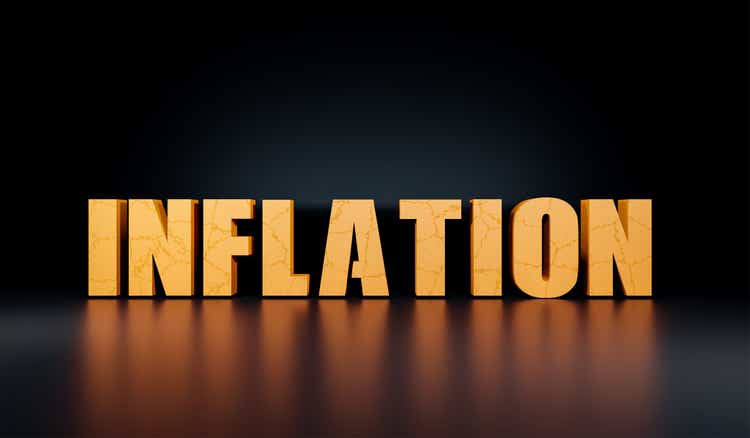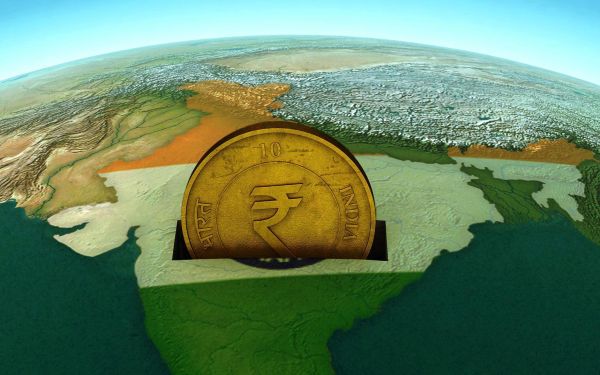In India, Rupee All Time Low Against USD, Forex Reserves All Time Low, Economy All Time Low, Jobs All Time Low, Export Ban. Isn’t India Going Through an Undeclared Emergency?

India’s growth was expected to be 7% on average for 2022–2023, and its contribution should be 28% and 22%, respectively, to Asian and global growth, but instead of this, India kept facing one after another crisis affecting its economy.
The rate of inflation in India is at its highest level in more than 40 years, and oil prices are at all-time highs. In the last few months, we have all read headlines with similar content. Since the start of the Russia-Ukraine war, the frequency of such headlines has drastically increased. Despite these terms may sound like nonsense, they all directly affect our money. These numbers have an impact on everything, from the food we have to the vehicle we drive.
The Russia-Ukraine situation worsened just after COVID-19 pandemic-related fears were starting to fade. India’s growth prospects seem to be dimming. All three of these necessary imports from the two at-war nations—crude oil, wheat, and cereal—have seen multiple price increases and continue to hover near US$100 per barrel.
India receives some of its fertilizer needs from the same area as well. This circumstance is making India’s already difficult fight with inflation worse. Increased expenditures for subsidies and lower tax revenues are caused by higher gasoline and fertilizer prices. The present account balance and the currency value will also get impacted by capital withdrawals and growing import costs.

Possible reasons for the undeclared emergency
The two forces that drive the world economy are supply and demand. A thriving economy depends on supply and demand being consistent with one another. When demand outpaces supply, there are fewer things available for purchase. Right now, more people are willing to spend more money to buy the product. This leads to demand-pull inflation, which raises total price levels (inflation). However, if the growth of supply is more quickly than demand, more and more sellers will be able to mark down the price of the goods. As a result, prices in the economy as a whole go down.

Another kind of inflation is inflation driven by costs. This happens when some factors that affect the price of raw materials raise the cost of production as a whole. For stable profits, producers provide them at a higher price, which drives up prices for the final consumers. These inflations may be the vital cause of this emergency.
Economists estimated a double-digit deficit in the balance of payments for the current fiscal year, which is a critical situation for the Indian unit because of the nation’s increasing trade imbalance. Analysts at Standard Chartered Bank determined that import and export values had reached or even surpassed pre-Covid levels as of the end of FY22.

What is wrong with the Indian economy?
Simply said, India is currently caught between the devil and the deep blue sea. The nation is dealing with demand-pull and cost-push types of inflation. Following the Covid-19 outbreak, demand has been rising in the economy. Due to the limitations on movement, demand was subdued but has now begun to increase. Boosting the supply of goods, however, takes time for businesses. Increased inflation and financial strain are the results of this.
There are many factors involved on the supply side. Since the Covid-19 epidemic first emerged, the supply chain has experienced difficulties. Particularly, there has been a severe shortage of semiconductors, which has caused a spike in the cost of smartphones, laptops, and other electronic devices.
Because of the Russia-Ukraine war, the situation has gotten worse. Major exporters of vital commodities are Russia and Ukraine. Oil, wheat, rare metals, and fertilizers are all included in this. Since the outbreak, the cost of oil has risen. Furthermore, it is especially problematic because oil is necessary for all forms of transportation. Therefore, if the price of oil increases, all things are also increased in price.
Additionally, the top 4 exporters of wheat in the world, Russia and Ukraine, have ceased shipping the crop outside. Our platters of food can clearly show the effects of that action. Flour and other similar goods are now more expensive thanks to businesses.
In the same way, rare metals and fertilizers are in low supply around the world. The statistics on inflation are evidence of this. Investors have been alarmed by this, and the stock markets are also reacting poorly to it.

What will be the future condition?
An illusion is formed when the mind mistakenly accepts something as reality. The same holds for statistical fabrications. When the National Statistical Office (NSO) released the most recent estimates of national income on May 31 and showed that the Indian economy grew at 8.7% in 2021–2022, those who supported the Narendra Modi government immediately claimed that the economy was in recovery mode, two years after the pandemic had upended it.
The global increase in energy and food prices, elevated inflationary expectations, normalization of monetary policy, and worsening global conditions all contribute to the Indian economy losing momentum.
Despite an increase in business investment made possible by the Production-Linked Incentive Scheme, real GDP growth is predicted to be 6.2% in FY 2023–24 and 6.9% in FY 2022–23. The rise in the price of energy imports will cause the current account deficit to grow while inflation will progressively fall.
edited and proofread by nikita sharma




